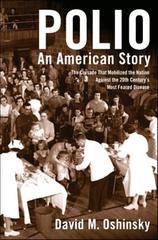 It has been nearly 40 years since a case of polio originated in the United States. Prior to the development of a vaccine by Jonas Salk in 1955, polio was a recurring scourge on humanity, causing death or paralysis among those afflicted (a stele from 13th-century BCE Egypt depicts a man with a withered leg believed to be a victim of polio). Thanks to a robust global eradication program, cases of naturally contracted polio are down to double digits worldwide. Full eradication has been hampered by conflicts in Syria, Afghanistan and Pakistan, though these numbers are a far cry from the mid-20th century, when polio killed or crippled more than 500,000 people every year.
It has been nearly 40 years since a case of polio originated in the United States. Prior to the development of a vaccine by Jonas Salk in 1955, polio was a recurring scourge on humanity, causing death or paralysis among those afflicted (a stele from 13th-century BCE Egypt depicts a man with a withered leg believed to be a victim of polio). Thanks to a robust global eradication program, cases of naturally contracted polio are down to double digits worldwide. Full eradication has been hampered by conflicts in Syria, Afghanistan and Pakistan, though these numbers are a far cry from the mid-20th century, when polio killed or crippled more than 500,000 people every year.
The epidemics of the 1940s and 1950s made polio the most feared disease in the United States. The efforts of millions of parents to keep their children away from places they believed spread the virus--like swimming pools and beaches--failed to prevent nearly 60,000 annual cases. Only Jonas Salk's vaccine, and an enormous vaccination effort promoted by the March of Dimes (created by the disease's most famous victim, FDR), made summer safe again. In Polio: An American Story (2005), medical historian David M. Oshinsky chronicles the polio epidemic in the U.S. and the race to discover an effective vaccine. Oshinsky's book won the 2006 Pulitzer Prize for History and is available in paperback from Oxford University Press ($16.95, 9780195307146). --Tobias Mutter

